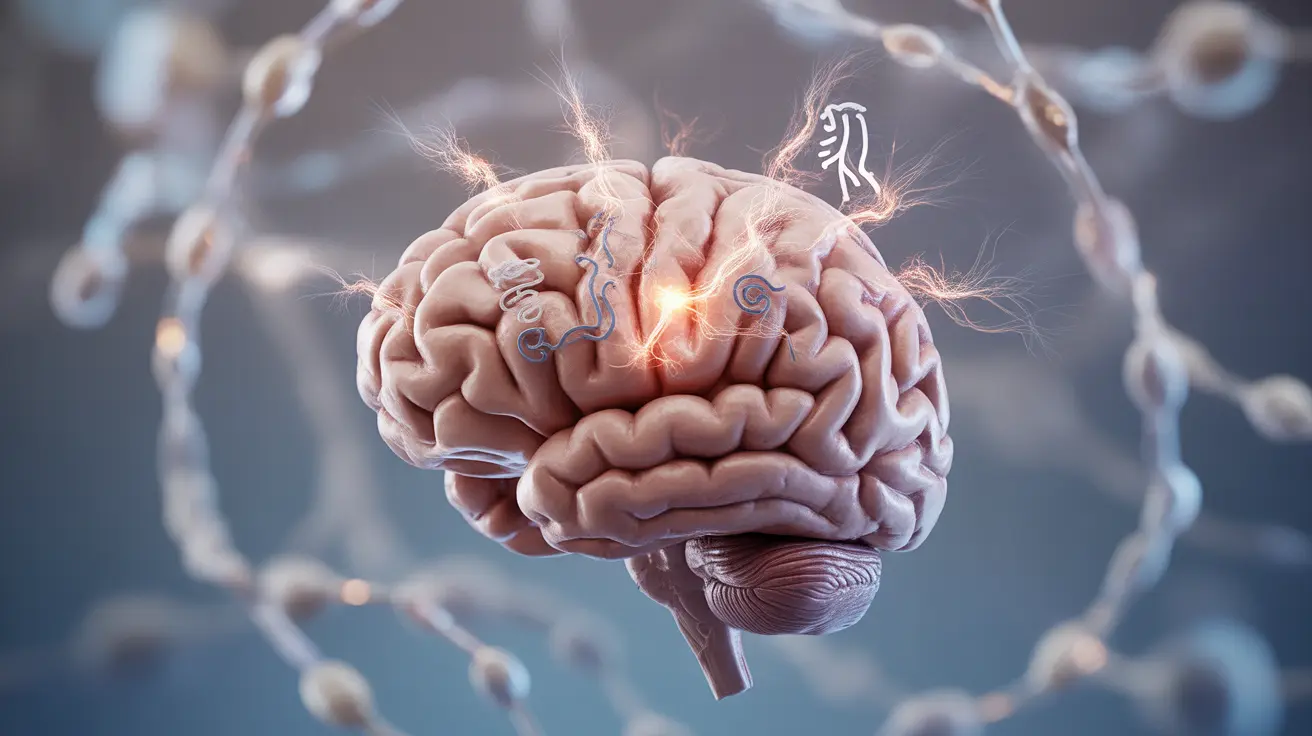Frontal lobe seizures can significantly impact daily life, affecting both cognitive function and physical well-being. These seizures, which originate in the brain's frontal lobes, have distinct characteristics and triggers that, when understood, can help in better management and treatment of the condition.
For individuals living with frontal lobe epilepsy, identifying and managing triggers is crucial for reducing seizure frequency and maintaining quality of life. This comprehensive guide explores the various aspects of frontal lobe seizures, from common triggers to treatment options.
Common Triggers of Frontal Lobe Seizures
Several factors can trigger frontal lobe seizures, and understanding these triggers is essential for prevention:
- Sleep deprivation or irregular sleep patterns
- Excessive stress and anxiety
- Alcohol consumption
- Certain medications
- Flickering lights or visual patterns
- Hormonal changes
- Fever or illness
- Dehydration
Recognizing these triggers allows individuals to take proactive steps in managing their condition and reducing seizure occurrence.
Recognizing Frontal Lobe Seizure Symptoms
Frontal lobe seizures often present with distinctive symptoms that can vary among individuals:
Physical Symptoms
- Sudden head and eye deviation
- Rapid bicycling movements of the legs
- Rhythmic arm movements
- Vocalization or screaming
- Brief loss of consciousness
Behavioral Symptoms
- Unusual posturing
- Complex motor movements
- Sudden changes in emotion
- Difficulty speaking
- Confusion during and after episodes
Diagnostic Approaches
Accurate diagnosis of frontal lobe epilepsy requires comprehensive evaluation and testing:
- Electroencephalogram (EEG) monitoring
- Magnetic Resonance Imaging (MRI)
- Neurological examination
- Medical history review
- Video EEG monitoring
Treatment Strategies
Treatment for frontal lobe seizures typically involves a multi-faceted approach:
Medication Management
Anti-epileptic drugs (AEDs) are usually the first line of treatment, with options carefully selected based on individual factors and seizure patterns.
Surgical Options
When medications prove ineffective, surgical intervention might be considered, particularly if seizures originate from a specific, operable area of the frontal lobe.
Lifestyle Modifications
Implementing lifestyle changes can significantly impact seizure frequency and severity:
- Maintaining regular sleep schedules
- Stress management techniques
- Avoiding known triggers
- Regular exercise
- Proper nutrition
- Adequate hydration
Frequently Asked Questions
What are the most common triggers for frontal lobe seizures, and how can they be avoided?
The most common triggers include sleep deprivation, stress, alcohol consumption, and certain medications. These can be avoided through maintaining regular sleep patterns, practicing stress management techniques, limiting alcohol intake, and working closely with healthcare providers on medication management.
How do doctors diagnose frontal lobe epilepsy, and what tests might be needed?
Doctors typically use a combination of EEG monitoring, MRI scans, and detailed medical history analysis. Video EEG monitoring may also be employed to capture seizure events and confirm the diagnosis.
What does a frontal lobe seizure feel like, and what symptoms should I watch for?
Frontal lobe seizures often involve sudden movements, including head and eye deviation, cycling leg movements, and unusual posturing. Patients may experience vocalization, brief consciousness loss, and confusion during and after episodes.
What treatment options are available for frontal lobe epilepsy, and when is surgery considered?
Treatment typically begins with anti-epileptic medications. Surgery may be considered when medications fail to control seizures effectively and when the seizure focus can be precisely located in an operable area of the frontal lobe.
Can lifestyle changes or diet help reduce the frequency of frontal lobe seizures?
Yes, lifestyle modifications can significantly impact seizure frequency. Maintaining regular sleep patterns, managing stress, following a balanced diet, staying hydrated, and avoiding known triggers can help reduce seizure occurrence.




